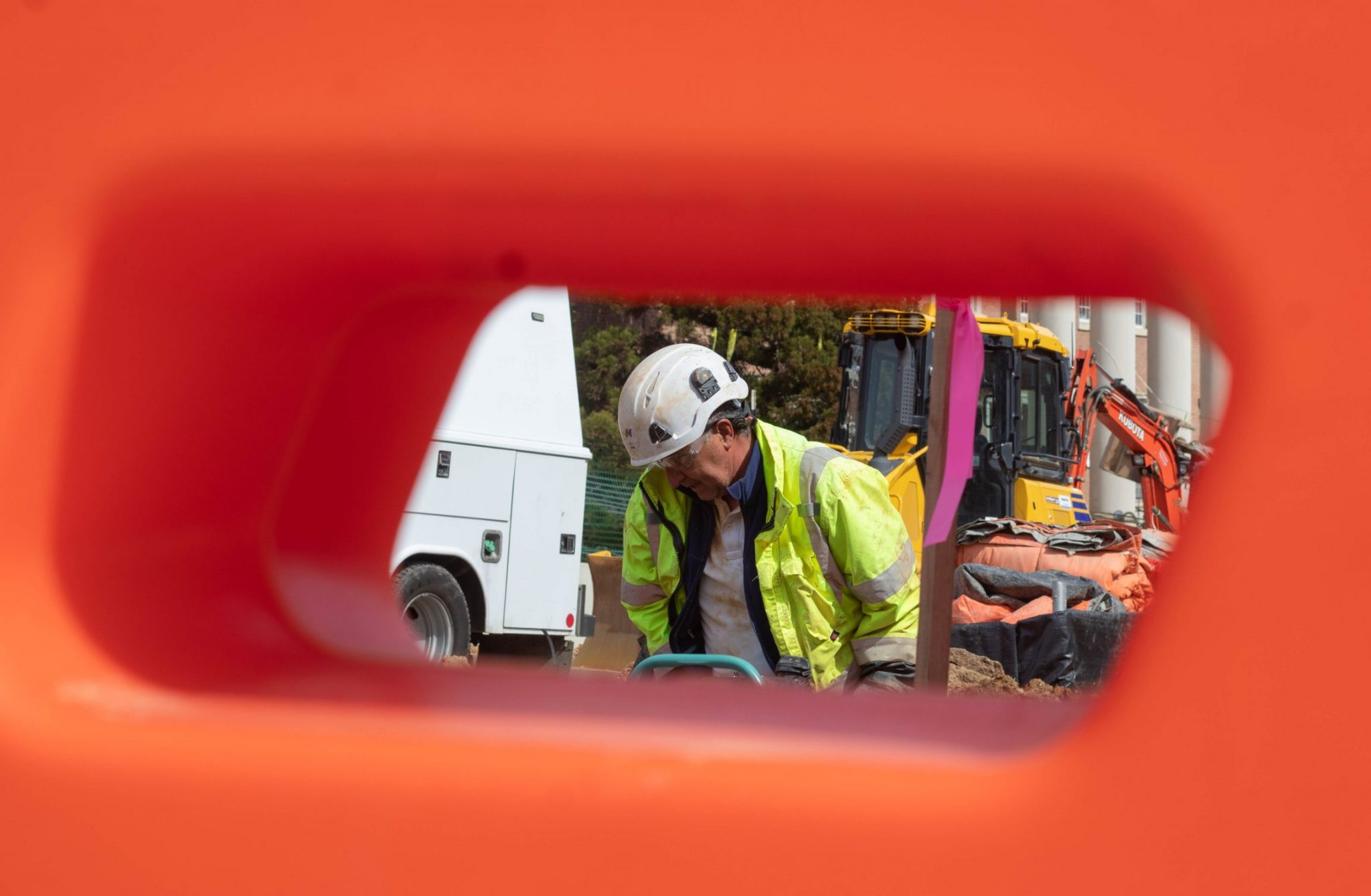Dorms along Campus Drive at the University of Maryland are set to close for part of the summer due to noise from nearby Purple Line work, underscoring community concerns about the construction’s health impacts.
University president Darryll Pines told The Diamondback that heavier construction on the upcoming light rail will occur during the summer, so dorms close to the louder, larger-scale construction will also close. Community members at this university have expressed wider concerns in recent months about noise pollution and other environmental effects of ongoing construction projects, such as the Purple Line.
“We’re trying to optimize both the health, safety for the humans that are occupying the space, as well as move this project along as fast and as optimal as possible,” Pines told The Diamondback. “That’s the nature of all construction projects.”
[Local officials say Campus Drive bike lane intersection poses danger to community]
Noise pollution is any unwanted, disruptive sound that can be considered irritating, according to Lacey Curry, a hearing and speech science assistant clinical professor at this university. Prolonged exposure to these sounds, such as construction, can damage hearing and lead to a decrease in cognitive functions, Curry said.
Curry said she is not too concerned about potential health risks associated with noise pollution from construction — except for students who live in dorms directly next to these sites.
“How loud and how long you’re subjected to that sound would add to the damage that you’d be facing as far as noise induced hearing loss or overall mental health,” Curry said.
Senior theatre and psychology major Sophia Cichetti said she was unable to sleep well in her apartment last semester because it was near road construction that would sometimes go on until 3 a.m.
“It was so, so bad,” Cichetti said. “I had to skip class a couple of times because it began to affect both my physical health and my mental health and I needed to just find time to actually sleep.”
The construction on campus could also cause air pollution, according to atmospheric and oceanic science professor Russell Dickerson. Most construction equipment is diesel powered, meaning the machinery can emit pollutants such as black carbon and diesel exhaust, he said.
The air quality on campus aligns with U.S. Environmental Protection Agency standards, Dickerson said.
[UMD community frustrated about lack of communication on tree-cutting in Guilford Woods]
“That’s no guarantee that it’s safe,” Dickerson said. “We’re making measurements, but we have no proof yet that there’s any spot on campus where students are in any danger of health effects from poor air quality.”
Purple Line development on this university’s campus can also release dust, paint and adhesive that are used during construction, according to Sacoby Wilson, a professor in this university’s epidemiology and biostatistics and applied environmental health departments. Wilson said he is concerned by constant construction on campus.
Short-term exposure to these pollutants can cause reactions such as burning eyes, noses and throats, Wilson added.
Students with underlying health conditions, children and older adults are the most susceptible to health risks associated with poor air quality, according to Wilson. But everyone who gets close to construction sites faces some possible risk, he added.
“It’s not good to walk in the area where construction has been done,” Wilson said. “It may not have a major impact on the overall, regional air quality, but for folks who are walking on sidewalks or biking by the locations — who may, again, be near to construction — there’s potential health risks for them.”



